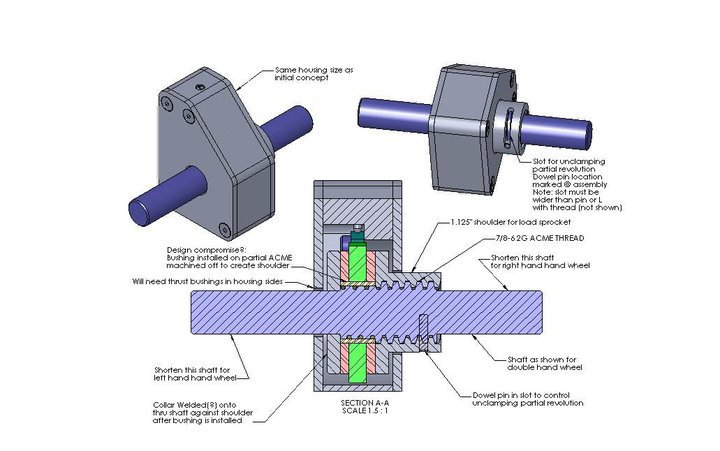Understanding and Designing to Military Specifications: The Essential Guide
In today’s world, there's an increasing requirement for products that can withstand extreme conditions. This need spans across various sectors, from consumer electronics to industrial equipment, emphasizing the importance of designing to military specifications, often referred to as mil-spec, MIL-STD, or military standard. But what does it mean to design a product to meet these rigorous standards, and why is it becoming increasingly relevant outside the military sector?
The Essence of MIL-SPEC and MIL-STD
Originally established by the United States Military, military specifications, or MIL-SPEC, and military standards, MIL-STD, were designed to set a definitive level of performance, durability, and maintainability for military equipment. These standards ensure that military-grade products can reliably perform under a wide array of harsh environmental conditions.
MIL-SPEC has become a synonymous term with ruggedness and reliability, qualities that are now sought after in consumer, commercial, and industrial products. Although initially exclusive to military equipment, the term “military-grade” has found its way into the marketing strategies of various products, from smartphones and laptops to vehicles and portable storage units.
The most commonly referenced standard in relation to MIL-SPEC products is MIL-STD-810. This standard outlines the environmental engineering considerations and laboratory tests that equipment should undergo based on its operational environment. It covers a broad spectrum of environmental effects, including but not limited to, temperature variations, humidity, vibration, shock, and exposure to liquids or particulate matter.
When and Why to Design to MIL-SPEC
The surge in demand for rugged design in everyday products raises the question: should all product designers aim to meet military standards? The answer is nuanced. For products intended for military use or those developed under military contracts, adhering to MIL-SPEC is non-negotiable. However, for consumer goods, the application of MIL-STDs can vary based on the product's intended use and the level of ruggedness desired.
Designing to MIL-SPEC, even for non-military products, offers several benefits. It sets a clear and quantifiable benchmark for product durability, which can significantly enhance product credibility and appeal in the eyes of consumers. Moreover, it allows manufacturers to tap into the growing market segment that values durability and reliability, potentially leading to increased brand loyalty.
However, it's crucial to note that the term “military-grade” is often used more as a marketing claim than a strict certification. Without standardized oversight outside the Department of Defense, the burden of proof for MIL-SPEC compliance falls on manufacturers and vendors. This makes it vital for consumers to scrutinize the ruggedness claims of products labeled as MIL-SPEC.
How to Design According to MIL-SPEC
Designing a product to meet MIL-SPEC standards involves a meticulous process of defining product requirements and selecting applicable standards based on the intended use case. This process, known as "tailoring," ensures that the product undergoes relevant tests to validate its compliance with MIL-STD-810 or other relevant standards.
The design must consider various environmental factors, material and component selection, and rigorous testing protocols. For instance, components used in MIL-SPEC products often conform to specific sizes, finishes, and performance criteria to ensure they can withstand the conditions outlined in the MIL-STDs. This could mean selecting more expensive or specialized components to meet the desired specifications.
Testing is a critical step in the MIL-SPEC design process. It involves subjecting the product or prototype to the conditions specified in the selected MIL-STDs to verify compliance. While some companies may conduct these tests in-house, independent third-party testing facilities are frequently used for their expertise and unbiased reporting.
MIL-SPEC in Practice: Real-world Examples
Several products have been successfully designed to meet MIL-SPEC standards, demonstrating the feasibility and benefits of such an approach. For instance, rugged container systems designed for military use have been adapted for consumer use, offering unparalleled durability and weather resistance. Similarly, electronic devices like rugged laptops and smartphones have been developed to meet specific MIL-STD-810G criteria, making them ideal for outdoor and industrial applications.
The Future of MIL-SPEC: Industrial IoT and Beyond
The integration of Industrial Internet of Things (IIoT) technology into heavy-duty industries presents new opportunities for MIL-SPEC design. As equipment becomes increasingly reliant on electronic sensors and data connectivity, the need for rugged, reliable components that can survive harsh environments becomes paramount. While not all IIoT devices may require full MIL-SPEC compliance, applying military standard environmental test methods can guide the design process to ensure optimal performance and durability.
The growing IIoT market, projected to reach significant financial milestones in the coming years, underscores the expanding relevance of MIL-SPEC design principles in industrial and consumer products alike.
Conclusion
The application of military specifications and standards in product design transcends traditional military equipment, offering valuable guidelines for creating durable, reliable products across various sectors. By understanding and leveraging MIL-SPEC and MIL-STD, manufacturers can meet the rising consumer demand for rugged products, differentiate their offerings, and build lasting brand loyalty. As technology continues to evolve and integrate into all aspects of life, the principles of MIL-SPEC design will remain a cornerstone for innovation and quality in product development.
.jpg)



